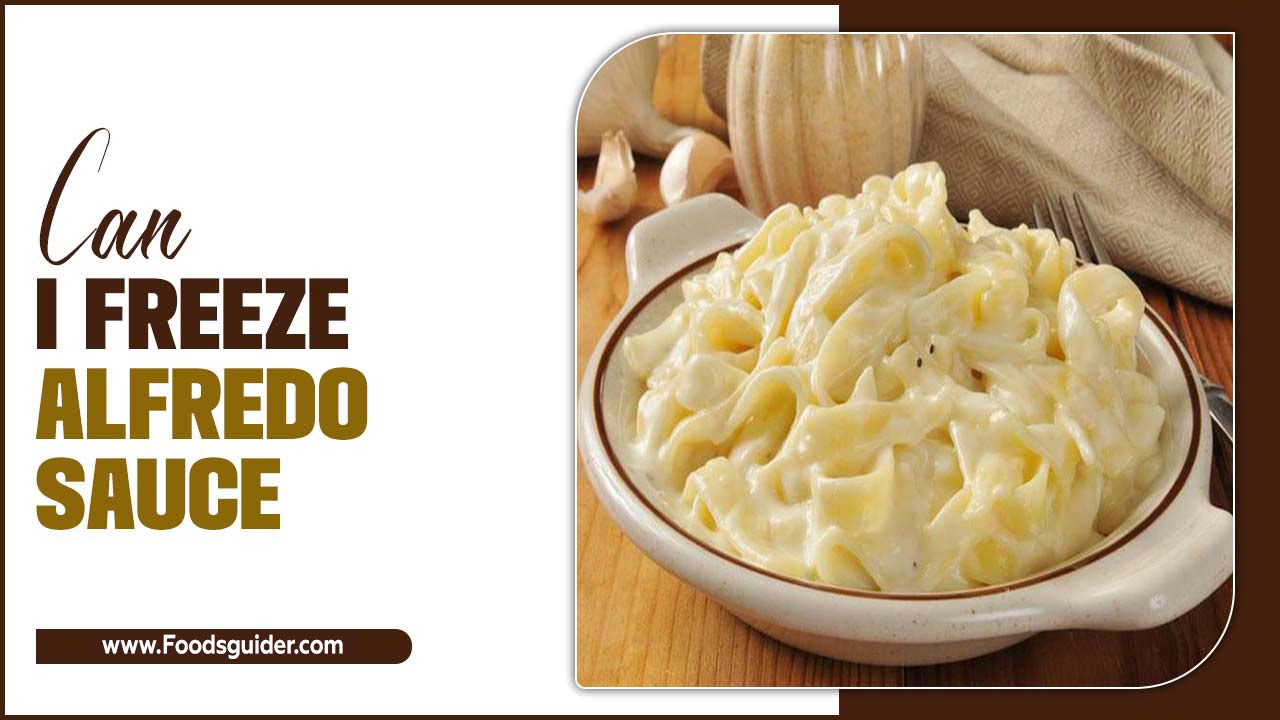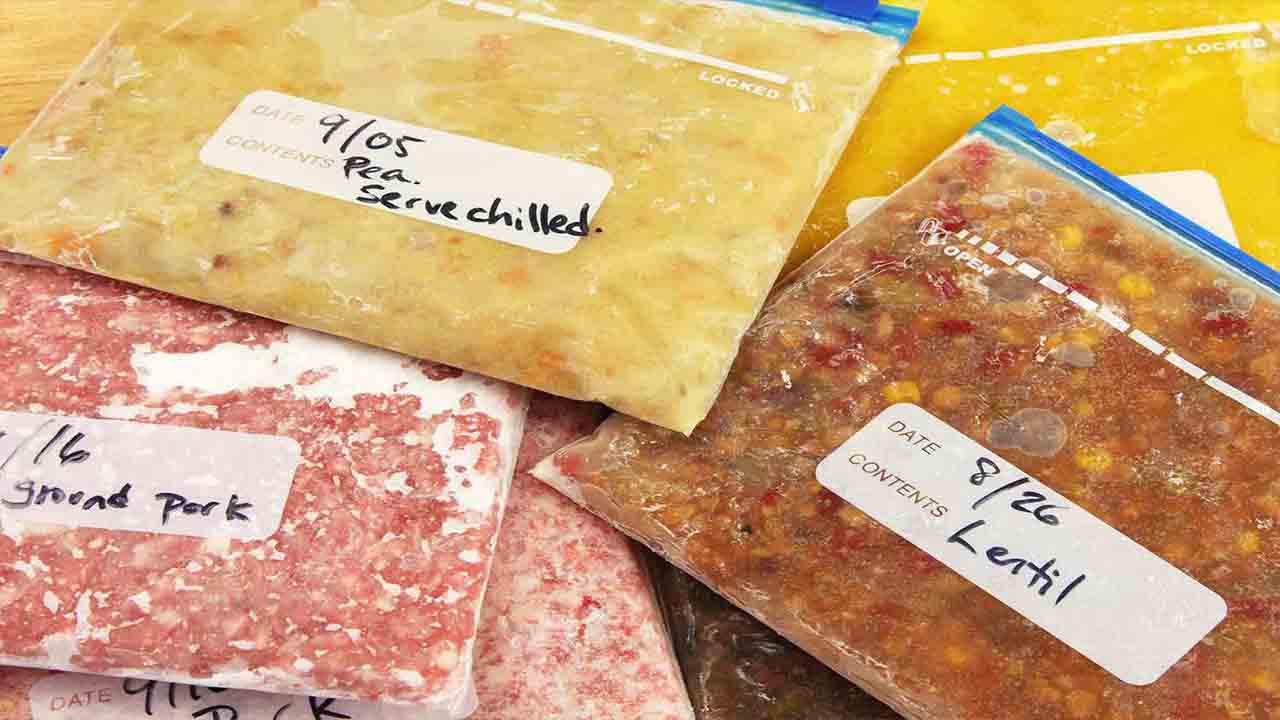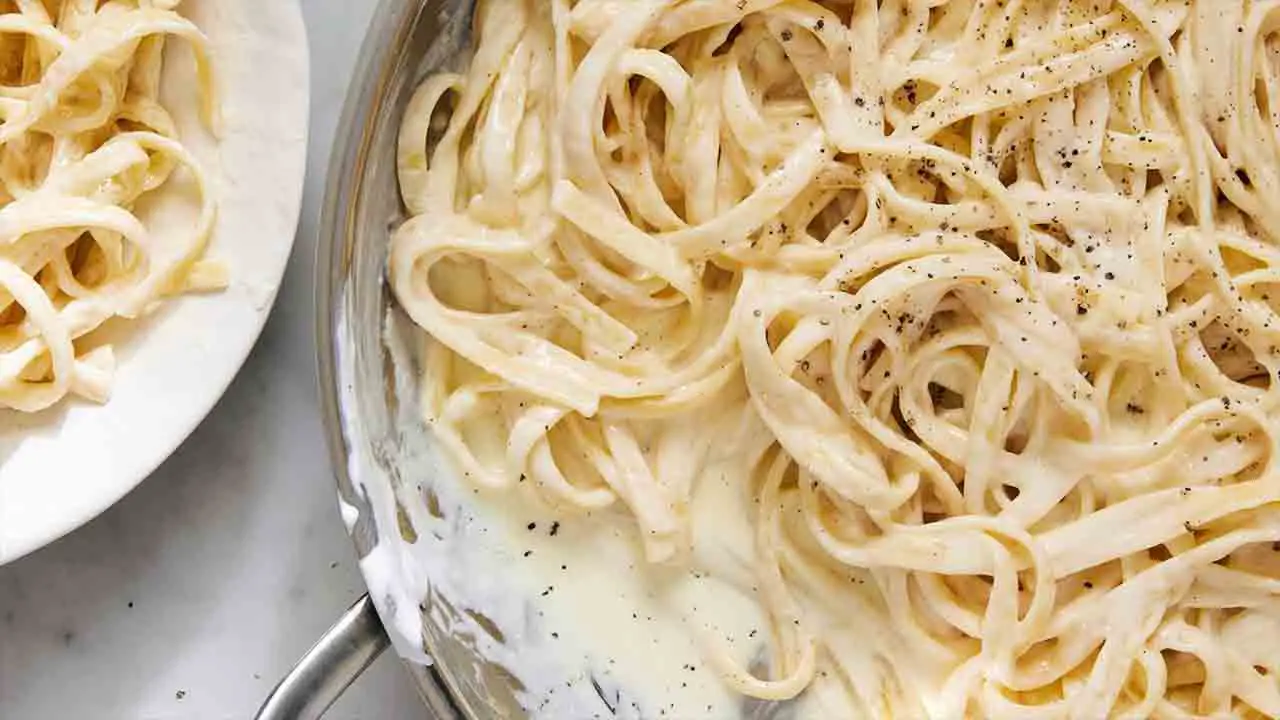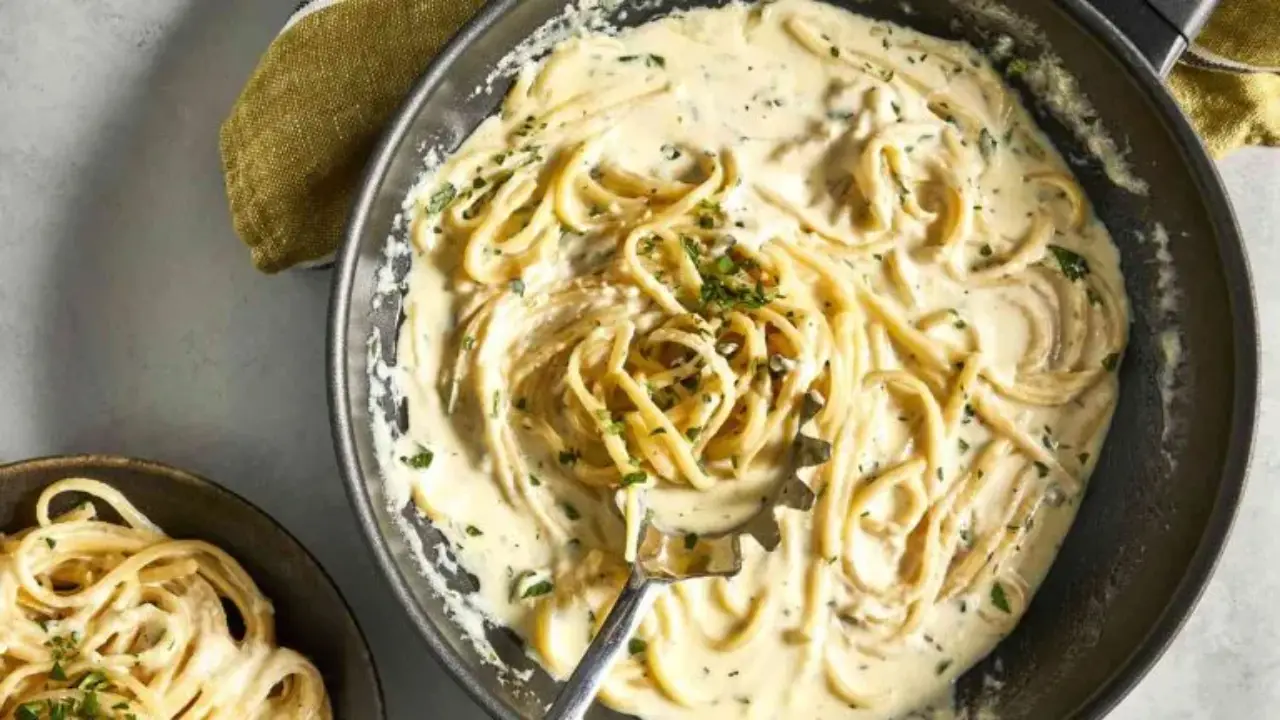Alfredo sauce is a beloved Italian dish, known for its rich and creamy texture. It’s a versatile sauce that can be used with various pasta, meats, and vegetables. However, if you’ve made too much Alfredo sauce or want to prepare a big batch for future meals, you may wonder if it’s possible to freeze it.
After all, wasting good food is never a good idea. Freezing food is a practical solution, but it’s not always the best choice, especially regarding sauces. The good news is you can freeze alfredo sauce, but there are some important things to consider before doing so.
Here we’ll explore whether can I freeze alfredo sauce, how to freeze it properly, and how to thaw it safely. We’ll also discuss some tips and tricks to ensure that your Alfredo sauce retains its texture and flavour after being frozen.

How Long Can I Freeze Alfredo Sauce

Yes, you can freeze Alfredo sauce. However, it’s essential to do it correctly to maintain its taste and texture. First, allow the sauce to cool completely before transferring it into airtight, freezer-safe containers. Leave some space for expansion. Alternatively, you can use freezer bags.
Label and date the containers for easy identification. When you want to use the sauce, thaw it in the refrigerator overnight. Reheat it gently on the stove, stirring occasionally to prevent separation. While freezing may alter its creaminess slightly, following these steps should preserve the overall quality of the Alfredo sauce for future use. Here is a guide on Can I Freeze Alfredo sauce.
Allow The Sauce To Cool
Yes, you can freeze Alfredo sauce, but allowing the sauce to cool completely before freezing is important. To do so, let the sauce cool down at room temperature for about 1 to 2 hours. Once cooled, transfer the Alfredo sauce to an airtight, freezer-safe container.
Make sure to leave some room for expansion as the sauce freezes. Alternatively, you can use freezer bags designed for liquids, squeezing out excess air before sealing. Label the container with the date for easy reference.
Frozen Alfredo sauce can typically last up to 3 to 4 months in the freezer. When ready to use it, thaw the sauce overnight in the refrigerator or place the container in a bowl of cold water to expedite the thawing process. Reheat the sauce gently over low heat on the stovetop, stirring occasionally to maintain its creamy consistency. Avoid microwaving as it may cause separation.
Use Airtight Containers

But it’s important to use airtight containers to ensure their quality and prevent freezer burn. Airtight containers create a barrier preventing air and moisture from entering, preserving the sauce’s flavour, texture, and freshness during freezing.
To freeze the Alfredo sauce, let it cool completely before transferring it into the airtight containers. Leave some room at the top to allow for expansion as it freezes. Label the containers with the date to keep track of their storage time. When thawing, move the container from the freezer to the refrigerator and let it defrost slowly to maintain its creamy consistency.
However, keep in mind that the sauce’s texture may change slightly after thawing, and it might need to be stirred and reheated gently to regain its original smoothness. When properly frozen and stored, Alfredo sauce can last for up to three months, making it a convenient option for future use in your favourite dishes.
Label And Date
You can freeze Alfredo sauce, but following certain guidelines is essential to maintain its quality. Before freezing, ensure the sauce is completely cooled. Pour the sauce into airtight, freezer-safe containers, leaving some space for expansion during freezing. Label the containers with the current date to keep track of its storage time.
Properly frozen, Alfredo sauce can last for 2 to 3 months in the freezer. When you’re ready to use it, thaw the sauce in the refrigerator overnight. To restore the creamy texture, gently reheat the sauce in a saucepan over low to medium heat, stirring frequently to avoid separation.
Remember that freezing may cause slight changes in the sauce’s consistency, but it should still taste delicious. Always use your best judgment and discard the sauce if it shows any signs of spoilage or an off odour.
Freeze Flat Or In Small Portions

Whether you freeze it flat or in small portions depends on your preferences and intended usage. Freezing flat in a resealable plastic bag allows for easy storage and faster thawing, which is ideal if you plan to use the entire batch at once or want to save space in the freezer. On the other hand, freezing in smaller portions, such as in ice cube trays or individual containers, offers convenience, as you can defrost only the amount needed for each meal.
To freeze Alfredo sauce properly, ensure it has cooled completely before transferring it into airtight, freezer-safe containers or bags. Leave some room for expansion, as sauces tend to expand when frozen. Label each container with the date to keep track of its freshness. Alfredo sauce can be frozen for up to three months when properly stored, retaining its flavour and texture when thawed and reheated.
Thawing And Reheating
Yes, you can freeze Alfredo sauce, but following proper thawing and reheating procedures is important to maintain its taste and texture. To freeze Alfredo sauce, let it cool down to room temperature. Then, transfer the sauce into an airtight container or a freezer-safe bag, leaving some space for expansion during freezing. Seal it tightly and label it with the date.
When thawing, place the frozen sauce in the refrigerator overnight. Avoid using a microwave or hot water for thawing, as it may cause uneven heating and affect the sauce’s quality. Once thawed, pour the sauce into a saucepan and reheat it over low to medium heat, stirring occasionally to prevent scorching.
Add a milk or cream splash to achieve the desired consistency if the sauce seems too thick. Following these steps will help preserve your Alfredo sauce’s flavour and creamy texture when you decide to use it again.
Creative Ways To Use Frozen Alfredo Sauce

Frozen Alfredo sauce is a versatile ingredient that can be used in a variety of creative ways. It’s a great option for busy weeknights or when you need a quick and easy meal. One creative way to use frozen Alfredo sauce is to use it as a base for pizza. Spread the sauce over a premade pizza crust and top with your favourite toppings.
Another option is to use it as a dip for veggies or chips. Simply microwave the sauce until heated and serve it alongside your favourite snacks. You can also use frozen Alfredo sauce as a pasta sauce. Cook your favourite pasta according to the package instructions and toss it with the sauce for a quick and easy meal.
Another creative way to use frozen Alfredo sauce is as a topping for baked potatoes. Simply heat the sauce and spoon it over a baked potato for a delicious and filling meal. Finally, you can use frozen Alfredo sauce as a base for a creamy soup. Combine the sauce with some chicken broth.
Reheating Frozen Alfredo Sauce

If you’re in a hurry and need to get dinner on the table quickly, reheating frozen Alfredo sauce can be a lifesaver. The best way to do this is to defrost the sauce overnight in the refrigerator, allowing it to thaw slowly. Once fully thawed, pour the sauce into a saucepan and heat it over low heat, stirring constantly. This will ensure that the sauce doesn’t scorch or separate.
If the sauce is too thick, you can add a splash of milk or cream to thin it out. Remember that Alfredo sauce contains dairy, which can curdle if heated too quickly or at too high a temperature. Use the microwave if you’re short on time and must reheat the sauce quickly. Simply transfer the frozen sauce to a microwave-safe dish and heat it on high for 30-second intervals, stirring between intervals.
Conclusion
So there you have it, folks! Can I freeze Alfredo sauce without losing its creamy goodness? Follow the steps we discussed earlier; a delicious sauce will be waiting for you whenever you need it. Freezing Alfredo sauce is a great way to get the most out of your creamy, cheesy goodness.
When freezing Alfredo sauce, it is important to take a few steps to ensure it does not lose its creamy texture and flavour. No more wasting leftovers or saying goodbye to your favourite pasta dish just because you made too much sauce. Now, go ahead and freeze that Alfredo sauce with confidence.
FAQ
1.What Type Of Container Should I Use To Freeze Alfredo Sauce?
Ans: Using airtight, freezer-safe containers or resealable plastic bags to freeze Alfredo sauce is best. Make sure to remove any excess air from the bags before sealing.
2.Can I Freeze Store-Bought Alfredo Sauce?
Ans: Yes, you can freeze store-bought Alfredo sauce. However, it is important to note that freezing Alfredo sauce can cause it to become watery and mushy. Transfer the sauce to a Ziploc container before freezing it for best results.
3.How Long Can I Store Alfredo Sauce In The Freezer?
Ans: Alfredo sauce can be stored in the freezer for 3 to 4 months. Labelling the containers with the date is best to keep track of their storage time.
4.Is There Any Risk Of The Sauce Separating Or Curdling After Freezing?
Ans: While freezing can cause slight separation in the sauce, this can be fixed by stirring the sauce well during reheating. Adding a bit of extra cream or milk can also help restore its smooth texture.
5.Can I Freeze Leftover Homemade Alfredo Sauce?
Ans: Freezing leftover homemade Alfredo sauce is an excellent way to prevent wastage. Cool it to room temperature before transferring it to the freezer for storage.